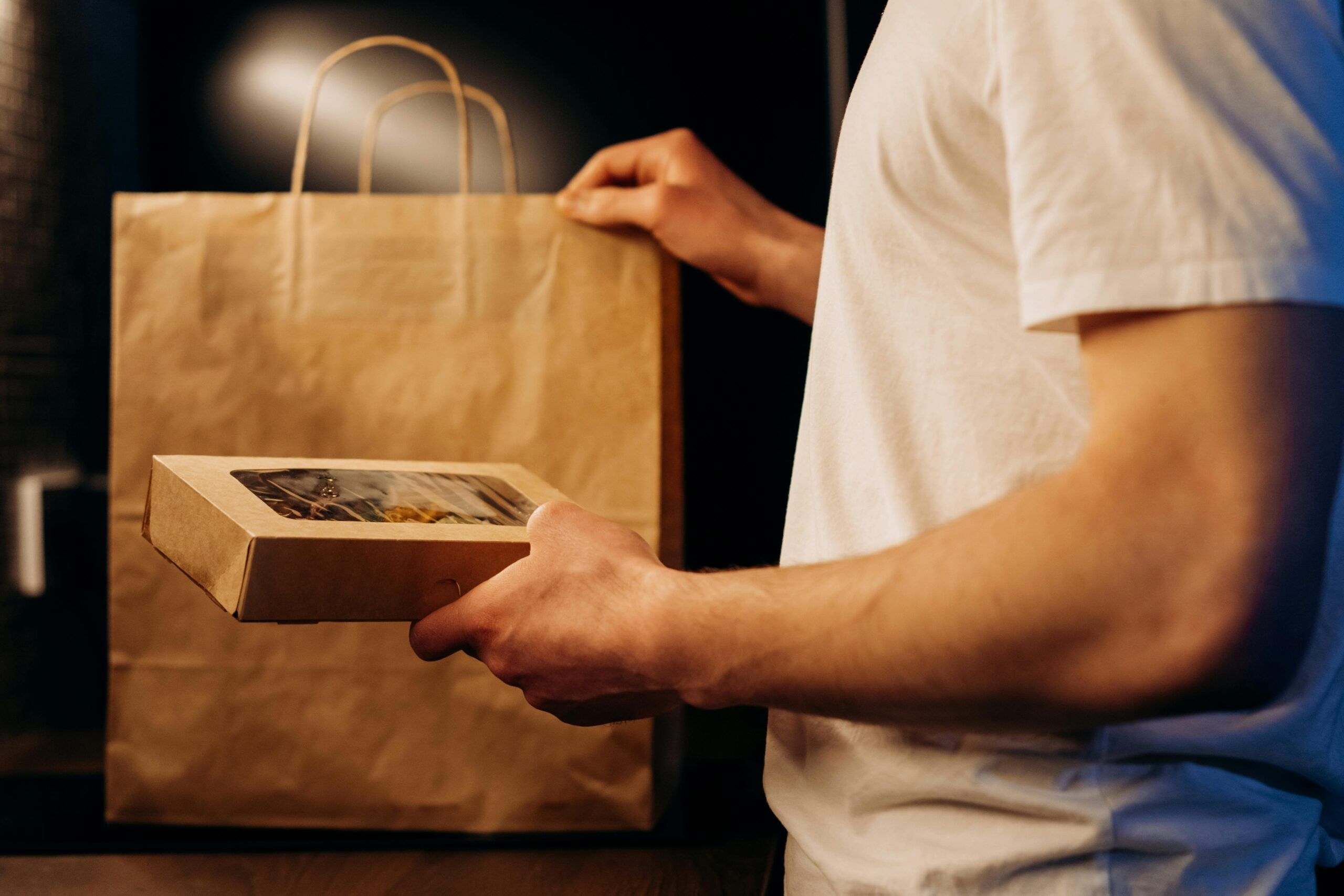- Factors You Need to Review Before Creating a Marketing Plan
- 8 Essential Restaurant Marketing Strategies
Restaurants that serve quality food and have excellent customer service can only go so far in today’s digital world.
Around 89% of restaurant research is done by mobile. So if your restaurant doesn’t have an online presence, you’re missing out on a lot of potential customers.
In this fast-paced environment, restaurant marketing can feel like a never-ending to-do list.
Keep your restaurant’s name front and center with this comprehensive restaurant marketing checklist, complete with actionable tips and strategies for success.
Factors You Need to Review Before Creating a Marketing Plan
One of the first steps in creating a successful marketing strategy is to review your budget. You need to know how much money you have available to spend on marketing and advertising efforts.
If you don’t have a lot of money to work with, that’s okay. There are plenty of low-cost or even free digital marketing ideas that can be very effective. The key is to be creative and think outside the box.
Besides your budget, you should consider the following factors before investing in a full-fledged marketing plan:
The level of market research:
If you’re starting from scratch, you’ll need to spend more money on market research to determine where your restaurant fits in the landscape. If you’re revamping your marketing strategy, you may already have some data that you can use.
Your target audience:
Who are you trying to reach with your marketing? Knowing your target audience will help you create targeted content and campaigns.
Your marketing goals:
What do you hope to achieve with your marketing? Do you want to increase brand awareness, drive more traffic to your website, or boost sales?
Your competition:
What are other restaurants in your area doing to market themselves? Knowing what your competition is up to will help you stay ahead of the curve.
Once you’ve reviewed your budget and taken these factors into consideration, you’re ready to start creating your restaurant marketing plan.
8 Essential Restaurant Marketing Strategies
When it comes to devising a plan for marketing your restaurant, there are a few key points you’ll want to cover. Here’s what should be on your restaurant marketing checklist:
1. Ensure You Have a Professional Website
77% of restaurant diners visit restaurant websites before deciding to go. In today’s digital world, your website is often the first impression potential customers will have of your restaurant. Make sure it makes a good one.
What to consider when building or revamping your site:
Ease of use:
Your website should be easy to navigate and informative. Customers should be able to find what they’re looking for without any trouble.
Up-to-date information:
Your website should always have the most current information about your restaurant, including your menu, hours, location, and contact information.
High-quality photos and videos:
Quality visuals will help make your site more engaging. Remember to choose your images carefully and avoid including large files that will slow down your site.
Making it mobile-friendly:
Make sure your website can be easily viewed and navigated on a mobile device. To check if your site is mobile-friendly, you can use Google’s free Mobile-Friendly Test tool.
An online ordering section:
If you offer takeout or delivery, make sure your website has an online ordering system. This will make it easier for customers to place their orders.
Having an online ordering site can also help increase your sales.
2. Work on Local SEO
Local SEO or local search engine optimization is the process of optimizing your website to rank higher in search engine results for local searches.
Some examples of local searches include “restaurants near me” or “delivery restaurants in (city name).”
To optimize your site for local SEO, you’ll want to do the following:
Add your business to Google My Business:
Google My Business is a free listing service that helps businesses appear in Google Maps and Google Search results.
To add your restaurant to GMB, go to the Google My Business website and click “Start Now.” You’ll then be prompted to enter your business name and address.
Add location pages:
If you have multiple locations, you’ll want to create a separate page for each one. On each location page, include the address, phone number, and hours of operation. You can also include photos, videos, and a Google Map.
Include local keywords:
When writing your website content, be sure to include local keywords. For example, if you’re a pizza restaurant in Los Angeles, you might use the keyword phrases “best pizza in LA” or “pizza delivery in LA.”
Get listed in local directories:
There are many online and offline local directories where you can list your restaurant. Some popular ones include Yelp and TripAdvisor.
Your Inbox, Your Rules!
Tailor your newsletter with the topics you're most interested in.
3. Create Compelling Content
Your website isn’t the only place where you can showcase your content. You can also create blog posts, infographics, videos, and more to help promote your business.
When creating content, be sure to keep the following in mind:
It should be original and informative: Customers should be able to learn something from your content.
It should be shareable: Include social sharing buttons on your content so readers can easily share it with their friends and followers.
It should be optimized for SEO: Use keyword-rich titles and descriptions to help your content rank higher in search engine results.
It should be visually appealing: Use high-quality images, videos, and infographics to make your content more engaging.
4. Use Social Media
Social media is a great way to connect with potential and current customers. It’s also a great platform for promoting your restaurant.
What to keep in mind when investing in social media marketing:
Find the right platform: Not all social media platforms are created equal. Do some research to find out which ones are most popular with your target audience.
Post quality content: Be sure to post interesting and engaging content that will appeal to your target audience.
Be active: Posting sporadically will not get you very far. To be successful, you need to be active on social media and post regularly.
Engage with your audience: Respond to comments, messages, and reviews. This will help create a rapport with your customers and make them feel valued.
Run promotions: Use social media to run promotions and giveaways. This is a great way to increase brand awareness and generate leads.
Use paid ads: Paid ads can help you reach a larger audience and boost your visibility.
User-generated content is also one of the most effective marketing tools available to restaurants.
When customers post photos and reviews of your food on social media, it helps create social proof and increase your restaurant’s credibility.
To encourage customers to post about your food, you can run promotions and giveaways. For example, you can offer a discount to customers who post about your restaurant on social media.
5. Encourage Reviews
Your marketing efforts will be for nothing if you don’t have happy customers. This is why it’s so important to encourage reviews and feedback from your customers.
There are a few ways you can do this:
Include a call-to-action on your receipts: A simple message such as “We’d love to hear from you!” with your contact information can encourage customers to leave a review.
Send follow-up emails: After a customer has visited your restaurant, send them a follow-up email and ask for their feedback.
Make it easy to leave a review: Include links to your Yelp, Google, and Facebook pages in your email signature and on your website.
Respond to reviews: Be sure to respond to both positive and negative reviews. This shows that you care about your customers’ experiences.
Reviews are an important part of any restaurant marketing strategy. They help you understand what customers like and don’t like about your restaurant. They also provide social proof, which can help convince potential customers to visit your restaurant.
6. Sponsor Local and Charitable Events
One of the best ways to connect with your community is to sponsor local events. This could be anything from a food drive to a 5K race. Not only will this help you give back to the community, but it will also help increase brand awareness.
When choosing an event to sponsor, be sure to choose one that aligns with your restaurant’s brand. For example, if you’re a healthy restaurant, you might want to sponsor a 5K race.
7. Run Ads
The restaurant industry is competitive, and it can be difficult to stand out from the crowd. This is where advertising comes in. Advertising can help you reach a larger audience and boost your visibility.
There are a few different types of restaurant ads that are cost-effective:
Search engine ads: These ads appear when customers search for keywords related to your restaurant.
Social media ads: You can use social media platforms like Facebook to run ads.
Display ads: These are banner ads that appear on websites and apps.
And if you’re a chain restaurant, there are several chain restaurant advertising ideas that you can use to stand out from the competition.
Review the Checklist and Start Implementing Restaurant Marketing Best Practices
Now that you know some of the best restaurant marketing practices, it’s time to start implementing them.
Keep in mind that you don’t have to implement all of these ideas at once. Start with a few that you think will be most effective for your business.



